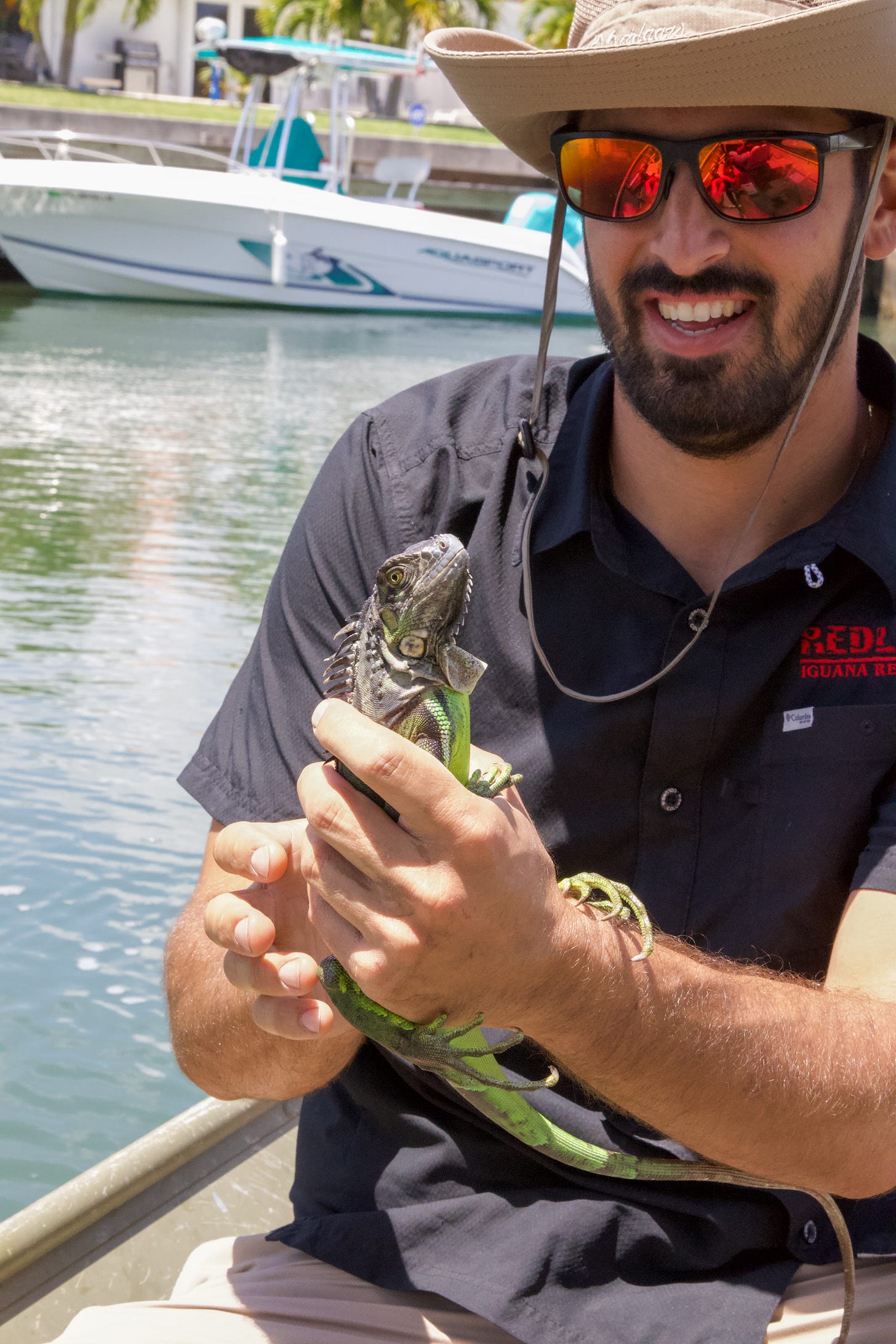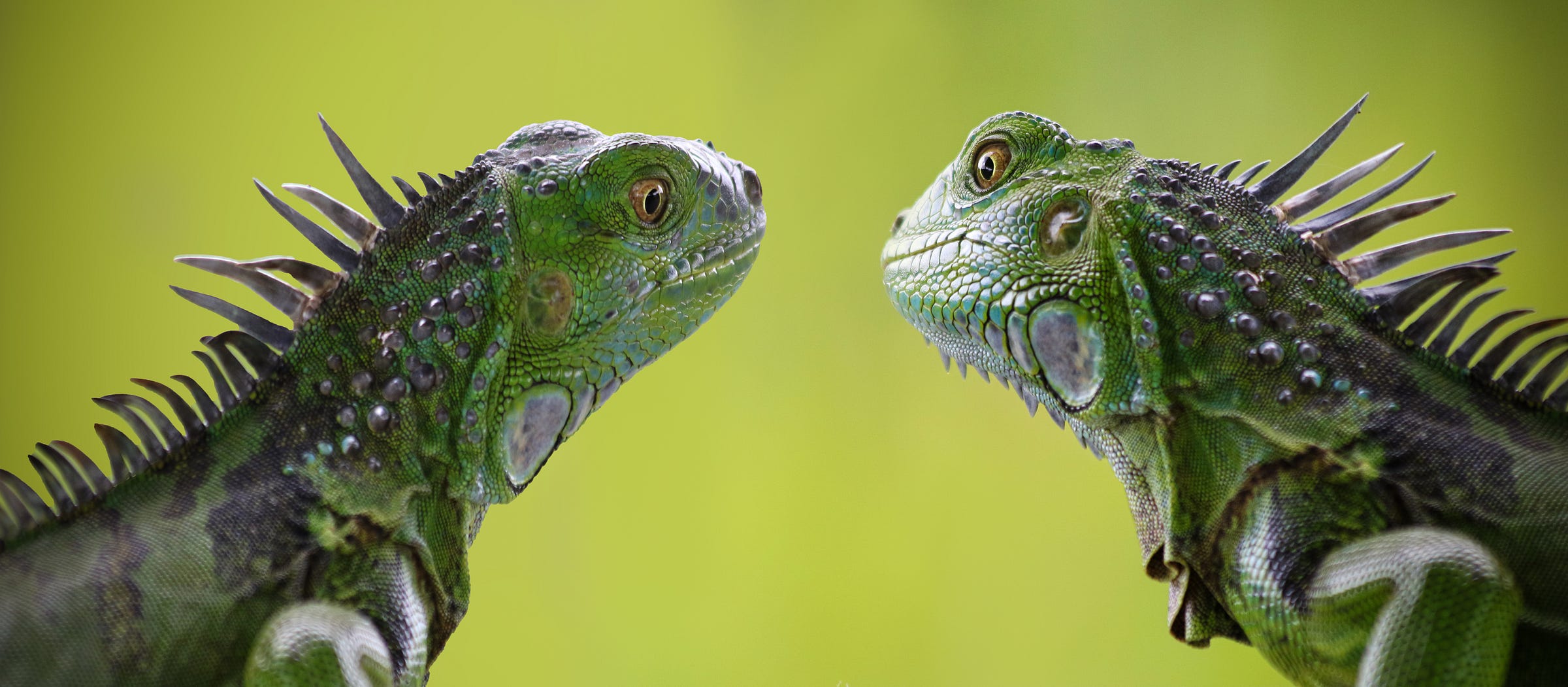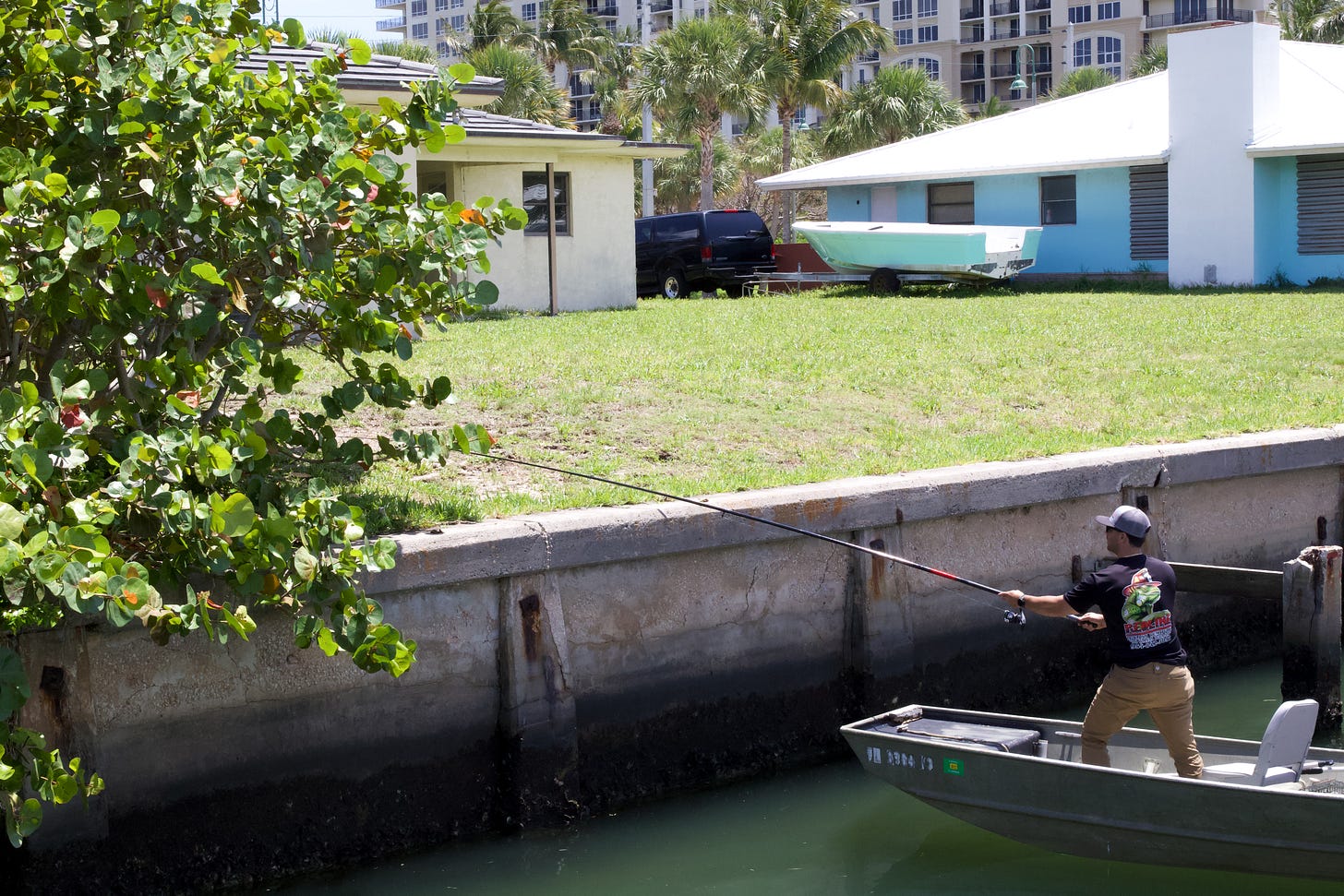The Iguana Conundrum
We love them. We hate them. But iguanas are here to stay, unless of course, you need them removed.
Story and Photographs by Lara C. Chapman
On a sunny spring day in 2004, I found myself, along with hundreds of other wedding guests, descending on the small island community of Boca Grande for a weekend in paradise. The area, then, and surely now, was a blend of Old Florida charm, beach luxury and natural wonders spanning from shore to shore. I can remember the crystal blue waters like it was yesterday.
I can also remember the iguanas. Though I can’t say for certain when I first noticed the spiny reptiles– they were hiding in plain sight – but most likely, it was when one fell from a tree – with a loud thud – a mere inches from my head.
At first, the colorful iguanas offered a sort of exotic appeal to the island. It didn’t occur to me that there might be a problem until I saw a woman with a broom, smacking the front door of her cottage home in the historic district, red-faced and exasperated. She was yelling, frantically, at someone, or something. But what? Then I saw the iguanas.

From lowlands and wetlands to swamps, canals, residential swimming pools, and backyards, the southern end of Florida, for years, has been home to these subtropical, nonnative reptiles, creating a new type of habitat — and depending on who you talk to – a new set of problems.
In a New York Times article dated Sept. 3, 1995, iguanas were affectionately called “the pet of the 90s” as imports to the United States increased to 500,000 from approximately 40,000 back in 1987. A top concern then, as it remains today: salmonella. Iguana feces carry the toxic bacteria, infecting humans through contaminated water or food, and causing reactions such as diarrhea, stomach pain, vomiting, and in some cases, death.
But that was 1995. Fast forward 28 years, to 2023, and most southern parts of Florida aren’t dealing with a few neighborly house pets or occasional salmonella poisonings. Iguanas are now well-established and permanent fixtures of the Florida landscape. So how did this happen?

From pets to invasive species
As the number of pet iguanas exploded in the United States, so have numbers of pet owners who can no longer care for them. Upkeep is increasingly difficult as iguanas grow in size – some up to six feet long – and behavioral changes during mating season can quickly turn aggressive, forcing owners to make a choice, and in many cases, the reptiles are set free.
In Florida, specifically, iguana populations are thriving – reproducing at startling rates – with an average lifespan of 10 to 20 years. Some even live into their 60s. With no natural predators, their presence in the state invariably leads to changes in the ecosystem through the consumption of flowers and plants such as Gray Nickerbean – the host plant of the endangered Miami Blue butterfly – in addition to bird eggs and even the endangered species of tree snails. They also harm infrastructure by digging burrows under sidewalks, foundations, seawalls, berms and canal banks.
To try to control iguana numbers, the Florida Fish and Wildlife Conservation Commission, in 2019, encouraged property owners to humanely kill green iguanas on their land or hire professional nuisance wildlife trappers, such as Redline Iguana Removal, to do the job.

Perry Colato and Blake Wilkins co-founded Redline Iguana Removal five years ago after seeing the environmental and infrastructural harm caused by iguanas in South Florida. As life-long outdoorsmen, Colato and Wilkins – who also grew up catching iguanas – are working to improve the local ecosystem and help homeowners better manage iguana populations. “We love Florida and we love the outdoors,” Wilkins says. “When we saw what was happening, and with our background, we felt like this would be something we’d enjoy.”
According to Wilkins, iguanas reproduce quickly and congregate near waterways such as the intercoastal or manmade retention ponds and canals, with significant populations residing inside large HOA communities.
“Since they’re nonnative and don't have any predators here, iguana numbers can jump pretty quickly, especially now as they’re laying eggs,” he says. “Just recently, we pulled 52 eggs from a single clutch.”

For South Florida’s nature-minded residents, opinions are mixed. Some are unfamiliar of the iguana’s nonnative status while others believe the creatures cause little to no harm. Critics, such as Kitty Block, CEO of the Humane Society, claim there’s no science-backed evidence to show that killing iguanas will work to solve the state’s problem.
Regardless of varying viewpoints, maintaining iguana populations is crucial for a thriving Florida ecosystem. And unless you are dealing with an iguana problem yourself, Wilkins says, it’s hard to imagine how troublesome they can be. “Homeowners, and certainly our elderly customers who may have trouble handling an iguana problem, are relieved when we complete a job for them, especially if iguanas are in their roof or leaving excrement by the pool,” he says. “And we’re happy to help any way we can.”
For information about Redline Iguana Removal, visit their website to learn more.






This was fascinating. Thanks for sharing with me Lara.